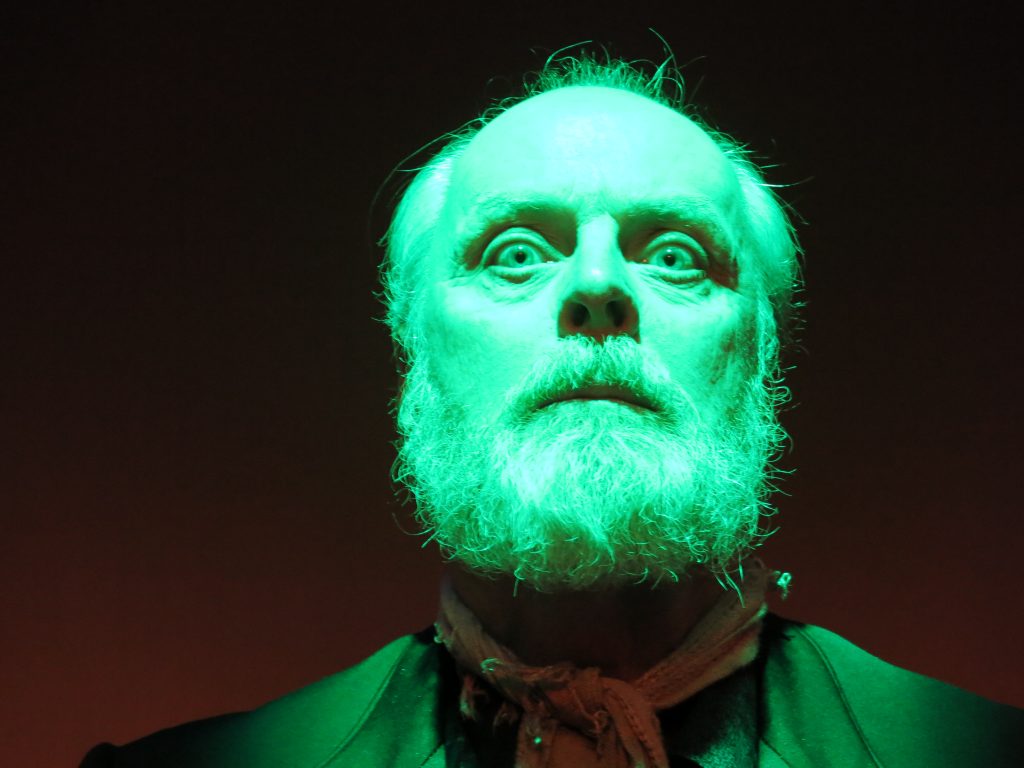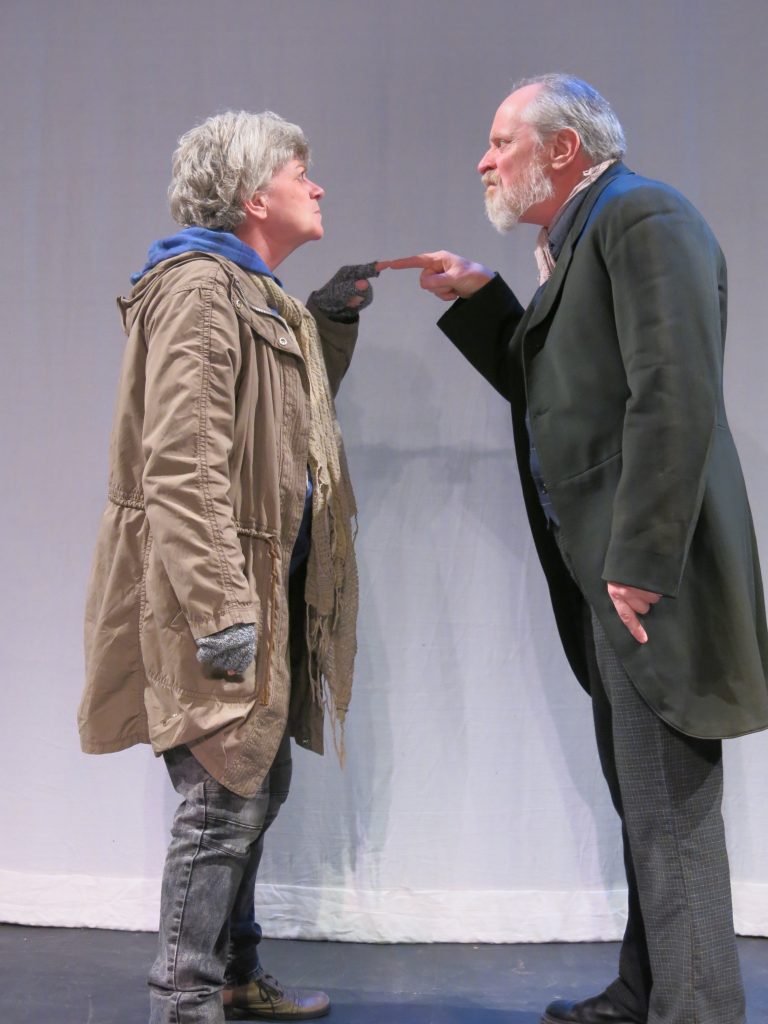
Credit: Guy Fauchon
PREVIOUS WEBSITE WAS HACKED. NEW SITE IS UNDER CONSTRUCTION.
At Jericho Arts Centre until December 18, 2016
604-224-8007/brownpapertickets.com
Posted December 8, 2016
“Jacob Marley was dead.” In Charles Dickens’ A Christmas Carol we know that Ebenezer Scrooge’s business partner is “most sincerely dead” but we don’t know why he comes back on Christmas Eve to haunt Scrooge’s bedchamber. What’s in it for Jacob Marley?
That’s where playwright Tom Mula begins: Marley is in The Counting House, a sort of antechamber to the next world, where he awaits his everlasting fate. The Record Keeper (David C. Jones) offers him a deal: to avoid going to Hell, Marley must reform Scrooge, “the only man worse than I”, claims Marley.
Accompanied and guided by the Bogle – a hobgoblin or ghost – Marley visits Scrooge’s past, present and future in his efforts to redeem him. On their journey we learn about Marley’s own childhood and discover why he turned out as warped as he did.
Directing for Theatre Obscura, Guy Fauchon keeps it simple, using the music originally composed for the play and a set so spare – two wooden chairs – that the focus is entirely on the characters and the story. And it’s a good story, well told.
Linden Banks, who recently stepped in at the last minute for United Players’ production of Ghosts, came to the rescue once again when the actor originally cast as Marley had to leave the show. Look no further than Banks for true Christmas spirit and, as he was in Ghosts, he’s outstanding. While I wasn’t moved to tears (as I was surprised to find a fellow critic was), I was touched by Marley’s awakening which is every bit as exultant as Scrooge’s. “I’m not the man I was”, chortles Scrooge gleefully. That is also Marley’s ecstatic self-realization.
Much of the pleasure in Jacob Marley’s Christmas Carol derives from hearing Dickens’ words incorporated into Mula’s script; we view this play through the lens of the 1843 novella right down to, “God bless us every one”. Mula’s script is equally poetic and evocative and the scenes of flying through night skies are magical. Exquisite lighting design by Chengyan Boon keeps us always aware of where we are.
Adam Francis Proulx makes a distinguished, albeit much younger, more robust Scrooge than usually seen. Dressed by costume designer Amy McDougall, Proulx strikes a handsome figure in silk top hat and waistcoat.

Credit: Guy Fauchon
Beth Gunderson, as the Bogle, functions like the Spirit does in the original story but the character, as envisioned by playwright Mula, is not heavy-handed, gloomy or even very judgmental. Gunderson is playful and teasing in the Bogle’s encouragement of Marley and there’s a happy payoff for her character similar to the one for Clarence in It’s A Wonderful Life.
It’s a real pleasure seeing David C. Jones again on stage; his career has led him more into directing and producing than in performing. He’s as versatile an actor as they come and in this play he’s particularly good as the Record Keeper in The Counting House – an otherworldly parallel to Scrooge and Marley’s accounting shop. We are told the Record Keeper is a “bull-doggish man with long white hair” and we believe it although Jones is neither bull-doggish nor longhaired. Jones also plays a variety of other characters; his Tiny Tim, perched on the knee of his mother (Gunderson again) is both hilarious and sweet.
It’s a heart-warming story, a little muddled in places and, for my money, a little on the sweet side but then I’m still in the Bah! Humbug stage of the season. Almost spartan in its presentation, it is nevertheless beautifully realized and a blessed relief from all the ringing cash registers and persistently piped-in Christmas carols. God bless you, every one at Theatre Obscura

